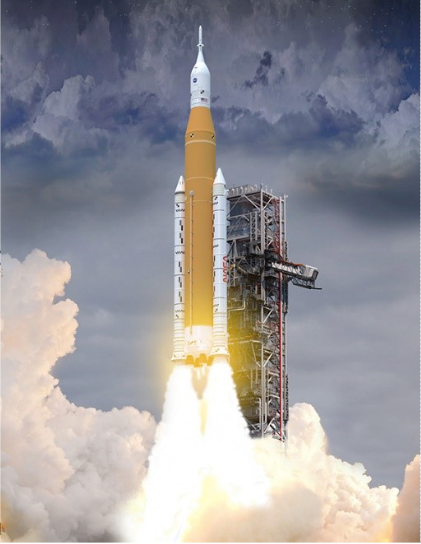Artemis I launch: Next step to the Moon
- Fernanda Pecoraro
- Nov 27, 2022
- 3 min read

On November 16, 2022, at 06:47:42 (Lisbon time zone) the Orion spacecraft was launched on its way to the moon. It is the first step of the Artemis project, which aims to restart human occupation on the Moon. After NASA discovered water at the Moon's south pole, it decided to create the Artemis project and with it several long and short-term projects. In addition to promoting astronaut diversity, it also intends to build a base camp to expand the scope of space study and give astronauts a place to live and work. Another of the company's plans is to create a mini space station orbiting the moon. This project is just the beginning of the planning for all these projects. The name of the mission is Artemis because in Greek mythology she is the twin sister of Apollo (the mission that took the first human to the moon).
In 1972 astronaut Gene Cernan, a crew member of the Apollo17 mission was the last human to walk on the moon. In December it will be the 50th anniversary of this event and by 2024 NASA plans to send astronaut Jessica Meir to relive the human occupation on the moon. She will not only be the first woman to leave a set of footprints on the moon, but also the first person of colour. Another huge step for mankind! With this action, the company intends not only to make space a place for people of all genders and skin colours but also to inspire the new generation, the Artemis Generation. "I wanted to be an astronaut from the time that I was five years old," said astronaut Jessica Meir. "For anybody that has a dream or some kind of aspiration, if they see somebody that they can identify with a little bit, it puts them into a totally unique perspective where they can say, 'Well, wait a minute, that person was just like me, and they did it so I can do it, too."
The Orion spacecraft can reach a speed of 38,000km/h (about 23612.11 mi)/h and will be the spacecraft that will perform most of the trajectories of the Artemis mission and set out on a 26-day (about 3.5 weeks) journey. Where it will circle the Moon as Josef Aschbacher, Director General of the European Space Agency (ESA) said: "We have to make sure that Orion is safely powered to the Moon, circles the Moon, and then, as you know, we have to bring it safely back to Earth, making sure that the capsule's entry into the atmosphere is on the right trajectory and at the right angle so that it can land in the Pacific Ocean. Yes, our work begins now, and it is a huge responsibility”.
The rocket used for the Artemis project is the most powerful rocket in the world known as the SLS (Space Launch System) (Space Launch System Rocket) and will also be the one used for almost all of the Artemis mission projects This launch was an extreme success, as Mike Sarafin, NASA's Artemis mission manager said, "Today, we got to witness the most powerful rocket in the world take the Earth by its edges and shake the bad guys out of it ...we have a priority mission at stake right now.” Agency administrator Bill Nelson agrees, "That's the biggest flare I've ever seen. That's the most acoustic shockwave I've ever experienced.... I have to say that what we saw tonight was an A+." But we still have a long way to go. This is just a test flight."
Resources
Information: Nasa's Artemis Moon rocket lifts off Earth - BBC News and NASA Artemis






Comentarios